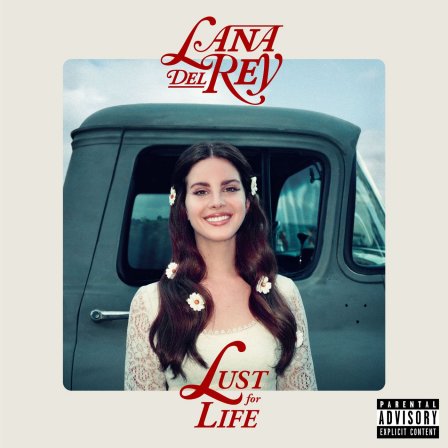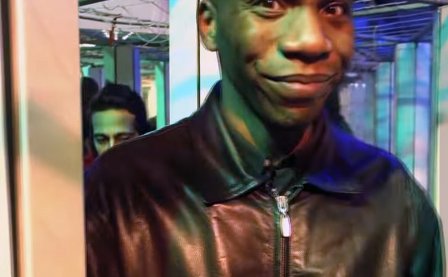“Daffodil bulbs instead of balls
Stared from the sockets of the eyes!”
– T.S. Eliot, “Whispers of Immortality”
“I could watch, through the songs, my life start to come back to me.”
– Stevie Nicks, “Dreams Unwind: Lana Del Rey In Conversation with Stevie Nicks”
I never expected that Lana Del Rey’s voice would be one of reassurance. Lust For Life is still her, the Best God Bless American Girl, but with her inner well-being coming together just as the United States affective sphere is coming apart, her fixed position feels more a lantern now than a siren. Where before she had regarded the cruel optimism of 2012 with a ghost’s longing, she’s now ready to make promises at present. This is the first time her lyrics have found summer in herself and not the signs she circled. A new beginning, Lana in spring, in July forever, under a new moon. But not quite yet. Lust For Life is melodramatic, but this isn’t melodrama and its runaway breakthroughs. It’s heavenly, but it’s not the work of our #1 angel, spinning out of this world. It’s shining all night long, but it’s not the colorized vision that the “Love” video suggested it could be. Lana, whose music has retained its lining since she assumed the name, is staring at the same sea, climbing the same stairway.
As usual, it’s best listened to when you’re in your feelings, and since good news is in short supply, that might be often enough for her gauzy vision of love to feel like a balm, the more wide-eyed the songs the better (“God Bless America - And The Beautiful Girls In It,” “Tomorrow Never Came,” “Get Free”). But, as referenced on the closer, she’s still riding her “Ride” of detours and misdirections, and she’s got “a war in [her] mind.” It manifests in the undertow of Born To Die arrangements and songwriting, opposed to the declarations of movement elsewhere. Lust For Life is her signal to change, which means she’s spending time with her dark parts. Depression falls back on itself, but the sequencing betrays the breadth of these songs for a tug-of-war of intent. The classic Lana moments in grayscale, some of them good themselves (“In My Feelings,” “Groupie Love,” “White Mustang,” “Heroin”), are sorta redundant rip currents to her summertime sadness, sweeping us away from the waves of camp romance and self-directed positivity in the album’s other half. (“Don’t worry, baby.”)
Uneven as it is, I still want to count the times Lust For Life stops my heart: when her voice quickens and rises near the end of “God Bless America - And The Beautiful Women In It,” when Stevie Nicks first fills the air and joins Lana for “something close to like a sugar rush,” when the “Exit Music (For A Film)” bass lunges in as razor sharp and effortless curses dot “Cherry,” when she says “Now that I’m singing with Sean [Ono Lennon],” like her wildest rock star dreams are coming true. The “Lust For Life” chorus! Somewhere along the way, I started to take her voice for granted, or at least let its range get drowned out by the discourse. She sings it electric here. Sometimes no more than Stevie Nicks’s “little echo,” sometimes whispering, longing, howling on “13 Beaches” and “When The World Was At War We Kept Dancing” and “Change.” (“There’s something in the wind.”)
She’s crossing the threshold of her “ordinary world,” where Great Lakes are reflecting pools and cliff sides overlook horizons always sunset-blushed, to the “reveal of her heart,” whose vision might look like moments from our own world. Getting in tune with every day. At the beach in July, a lightning storm approached and we were whistled off the sand. I went for cover at the concessions and bathrooms, where a group of boys were dancing to one of the maybe-endless “Summertime Sadness” remixes I hadn’t heard. Everyone’s hair was standing on their heads and there was barely rainfall. Just electricity in the air. Two years before, Jenny Hval balanced atop an exercise ball on the Apocalypse, girl tour and played a voice memo cover of “Summertime Sadness,” her version a distant, frail thing compared to the blown-out speakers at the beach. Lust For Life rests between these two waves, carried away and carrying me away.
Somehow, she’s also a still point. It’s strange how time passing has turned her contested out-of-touchness into something forward-thinking, even as she remains problematic in the same ways as ever. What’s changed is a broadening critical awareness of her self-awareness — which has mostly just meant crediting her a sense of humor and deciding we were now in on the dynamics of her play from the beginning. What else has changed is the new state of radio that she’d long been channeling, where it’s now unsurprising for pop and rock to appropriate trap like a filter. For what’s been called her political record, her concerns (the grid of heterosexuality and American dreams) are largely the same as ever, they’re just being named as political. Her sentimental refitting of 1960s Americana onto her own troubled fantasy feels more applicable, as retroactive precarity is being mobilized and everything is going “backwards.” The protest and unrest of the contemporary United States is cast on Lust For Life as something resurrected, where Coachella could be confused for Woodstock, not as an episode in the continuity of America’s exceptional cruelty and incoherence. Maybe because of how she collapses timelines (dragging forward more classic rock allusions than ever), it seems more a rupture to hear her sing “God bless America” than to question the “end of an era.” A little of Lana’s light goes a long way, and by remaking the times, she’s setting the stage for her Second Summer of Love, a prayerful consideration of her contribution (“that words could turn to birds”).
Near the ending of the color-coated video for “Love,” there’s a new moon hanging over the sea that reappears in the opening of the “Lust For Life” video, floating toward us to become the dark center of Lana’s eye. That circle of intention and clearing is the heart of the album, one that starts beating at the finale. But she’s not at Yosemite, not yet. Where her last two albums have left her singing other artists’ songs — begging to be understood or embracing the seeming inevitability of her loneliness — Lust For Life earns its title by closing with a realization of realization: a forward look at what might be, for once, lasting change. On “Get Free,” she is singing for herself, Lana as inventor. That slight waking-up to her heart becomes the beginning of radical movement, of drawing out the good at bay. She becomes a golden light transmitted as a keeper and protector for the doubtful, the reassurance that behind the changing play and musical plateaus of Lana Del Rey is a bettering, believing Lana.
Reading palms in the L.A. doom, she repeats, “Out of the black, into the blue,” with smiling conviction. It’s another hard-won and borrowed line, rejecting excess and withdrawal, and embracing the idea that blue isn’t just a shade of cool or history of violence, but a “deep and open fountain, running continuously.” It’s what keeps us alive, counting down summer enough for tonight, washed by the waves. When there’s nothing left to hold on to, you can fix your sight on the promise of her self-renewal. An organ hum and birdsong play us out, high by the beach, smiling at the sun and staring at the sea. The stars turn below and the wind picks up, Lana’s sugar-rushing voice on its wing. The sea calls her home. And you listen to her for yourself, asking, could we take heart once more?
More about: A$AP Rocky, Lana Del Rey, Playboi Carti, Sean Lennon, The Weeknd




